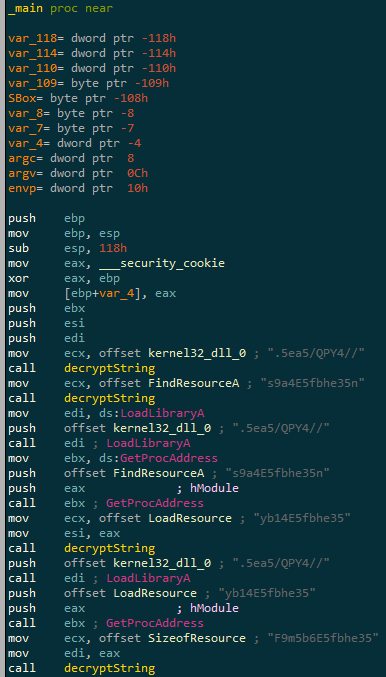

#Email obfuscator ascii software
If a file contains malicious scripts or links in plaintext, the security software can quickly parse and block it. In the e-mail source code, the HTML attachment looks like plain text, usually Base64-encoded.įig. Some attachments consist entirely (or mostly) of a JS script. Typically, the HTML page sends data to a malicious URL specified in the script. Phishing elements in HTML attachments are usually implemented using JavaScript, which handles redirecting the user to a phishing site or collecting and sending credentials to scammers.įig. Example e-mail with an HTML attachment Structure of phishing HTML attachments In addition, an HTML file, like an e-mail, can be modified according to the intended victim and attack vector, allowing for more personalized phishing content.įig.1. The second type of HTML attachment makes it possible to skip creating the website altogether and save on hosting costs: the phishing form and the script that harvests the data are embedded directly in the attachment. In the first case, the attackers can not only hide a link in the file, but also automatically redirect the user to the fraudulent site when they open this file. There are two main types of HTML attachments that cybercriminals use: HTML files with a link to a fake website or a full-fledged phishing page. HTML offers more possibilities than e-mail for camouflaging phishing content. It does away with the need to put links in the e-mail body, which antispam engines and e-mail antiviruses usually detect with ease.
#Email obfuscator ascii code
As stated earlier, this code can still be used on h2g2 with no changes.The use of embedded HTML documents in phishing e-mails is a standard technique employed by cybercriminals. This is designed for standard web pages and so will produce the HTML 'a' version of the code rather than the GuideML 'LINK' version. LinksĪ page which will create the code for a link using this technique can be found at the Email Obfuscator. Secondly, the above email address is an example address and is not real. Firstly, the above code is, as mentioned before, not approved GuideML. You should use lowercase letters, as uppercase HTML will occasionally cause problems. To put an email link on an ordinary web page, simply replace the words 'LINK' and 'HREF' in the GuideML with 'a' and 'href'. An Email Address as a Clickable Link in HTML

You can also use the following HTML method in GuideML pages. Try clicking on it! Email me hereĭo not forget the two double-quote characters ("), one before 'mailto:' and one before the first > symbol. followed by some text, such as 'email me', but do not use a real plain-text email address at this point as that would defeat the purpose of using ASCII codes in the first place. To do it using GuideML links, you first need to put the following: There are two methods you can use to make a clickable email address in GuideML. When the reader clicks on the link, they will be brought to their email program, with the address already filled in in the address field. You may want to display your email address as a link. To do the same in HTML, you need to use the &#XXX form of the code, from the third column of the Email Address as a Clickable Link in GuideML However this cannot be used to create a link, or with HTML. The above code, which gives text which can be copied and pasted, is official GuideML. Thus, to enter the email address e.com, just put the following in your GuideML: Just replace each letter and symbol in your email address with the appropriate 'entity'. The two techniques are demonstrated below. How they are used depend on whether you wish to write GuideML (the language of h2g2) or HTML (used in many other places on the Internet). The ASCII codes are the numbers associated with each letter. Instead of typing the letters of your email address, you enter the text using ASCII codes, much like the entity name if you want to put an ampersand (&) in a GuideML page. This means that you are less susceptible to spamming, as someone has to physically read your page to find the address.

It is possible to put your email address on a web page in a way that can be read by people but is hard for bots to find. Spammers, on the other hand, use such bots to collect email addresses contained within the text of websites. Many of these are used by search engines such as Google to keep track of what's on the Internet. Out there on the Internet are small programs called 'robots', or 'bots' for short, which spend 24 hours a day scanning web pages for information. People often want to put email addresses on pages, both h2g2 pages and HTML-based web pages.


 0 kommentar(er)
0 kommentar(er)
